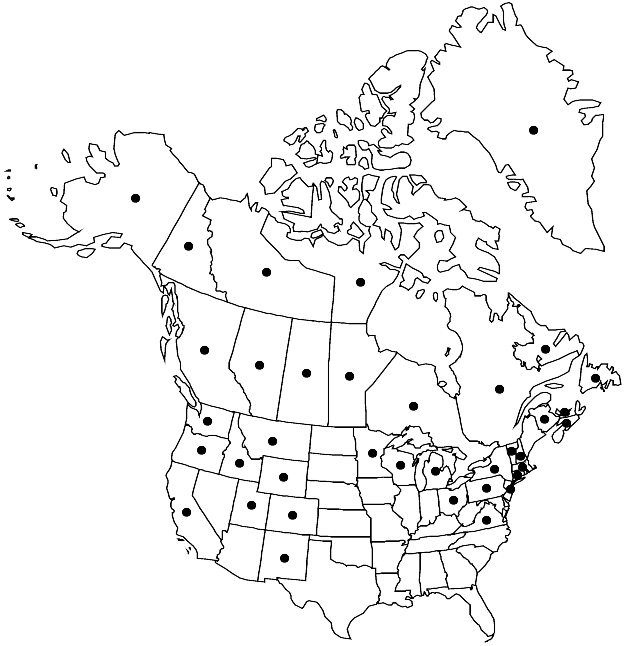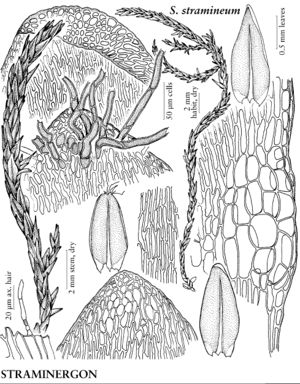Straminergon stramineum
J. Bryol. 17: 463. 1993.
Stem leaves with apex often cucullate; medial laminal cells 40–88 µm.
Habitat: Mineral-poor to -rich, nutrient-poor to -rich fens, shores, irrigated rock
Elevation: low to high elevations
Distribution

Greenland, Alta., B.C., Man., N.B., Nfld. and Labr., N.W.T., N.S., Nunavut, Ont., P.E.I., Que., Sask., Yukon, Alaska, Calif., Colo., Conn., Idaho, Mass., Mich., Minn., Mont., N.H., N.J., N.Mex., N.Y., Ohio, Oreg., Pa., Utah, Vt., Va., Wash., Wis., Wyo., South America, n Eurasia, Africa, Pacific Islands (New Zealand), Australia.
Discussion
Straminergon stramineum is distinguished by the pale, sparsely branched shoots and oblong, ovate, or narrowly ovate leaves with rounded apices. This is one species of Calliergonaceae in which the rhizoid initials near the leaf apex frequently produce rhizoids, which can then be seen as small brownish tufts from some leaves. Occasionally, S. stramineum is confused with the autoicous Calliergon cordifolium in the field. However, small modifications of the latter with comparatively narrow leaves have indistinctly delimited, large alar regions which reach from the leaf margin to the costa or almost so, whereas the alar regions of S. stramineum are well delimited and ovate or broadly ovate along the basal margin. For the differences between S. stramineum and Sarmentypnum sarmentosum, see the discussion after the latter.
Selected References
None.
